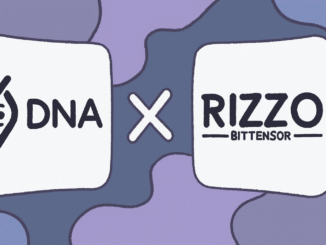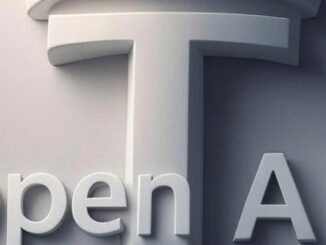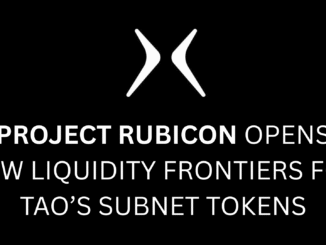
By: Punisher
The moment has come
This Monday, SN106 goes live on mainnet. For the first time, a Bittensor subnet will reward miners not for the performance of their models, but for providing liquidity.
SN106 launches on Solana, leveraging Raydium CLMM and the new wALPHA/wTAO trading pairs.
- Miners: earn $α by providing concentrated “in-range” liquidity.
- Validators: confirm deposits and uptime, securing the system.
- Subnet owners: now have a golden opportunity to activate their Alpha tokens without disrupting native dTAO pools.
👉 This isn’t just another subnet launch. It’s a new class of subnet, where DeFi mechanics meet Bittensor’s incentive design.
Why this matters
Arbitrage + Liquidity = Stability.
- If Solana trades cheaper, arbitrageurs buy there and re-bridge to sell higher.
- If Solana trades higher, flows move the other way.
The result:
- Stable pricing between Solana and Bittensor.
- Growing liquidity on Raydium, with reduced slippage.
- Ecosystem benefits: more efficient markets, better DeFi composability for TAO & Alpha.
As Const put it: “Help cross tokens get liquidity, and take your share.” SN106 makes this vision real.
What makes SN106 different
Unlike other liquidity initiatives, SN106 is self-funded. It captures revenues through:
- bridge fees
- trading fees
- staking rewards
- validator commissions
- arbitrage profits
All of this feeds into a protocol treasury, which reinvests half into liquidity pools and half into $α reserves.
This creates a self-reinforcing loop: more liquidity → more trades → more fees → bigger treasury → more liquidity.
That’s why the team calls it “the only self-sustaining liquidity subnet.”
And there’s more: thanks to this revenue model, the protocol can also run and fund validators on other strategic subnets. SN106 thus becomes a source of support and consolidation for the entire Bittensor ecosystem.
Emissions distribution
SN106 emissions follow a model designed to mirror TAO’s distribution.
Example: Today, Chutes (SN64) captures 10% of total TAO emissions. These emissions feed the SN64/TAO pool on Bittensor.
Under SN106’s framework, the wSN64/wTAO liquidity pair will therefore receive 10% of SN106’s total emission weight.
Concretely, this means:
- LPs who provide capital to the wSN64/wTAO pool directly compete for that 10% allocation.
- Distribution is fair, based on depth and effective liquidity contribution.
SN106 thus establishes a transparent bridge between TAO emissions and dedicated incentives, reinforcing the coherence of the incentive system.
Roadmap
Monday is just the beginning.
- Phase 2 (now): Incentives live on Solana.
- Phase 3 (Sept. 2025): Protocol-owned liquidity & treasury model.
- Phase 3b (Oct. 2025): CCIP integration, expansion to Ethereum, Base, Arbitrum, Optimism, Sonic, BNB Chain.
- Phase 4 (Nov. 2025): Extended cross-chain incentives.
- 2026+: Automatic onboarding of new CCIP networks and new Bittensor subnets.
SN106 is built to scale, from Solana to everywhere.
Conclusion
Monday’s launch isn’t just flipping a switch. It’s the start of a subnet that:
- Rewards liquidity like mining.
- Aligns Solana and Bittensor through arbitrage.
- Finances its own growth with a sustainable treasury.
- Can deploy validators on other subnets to strengthen the ecosystem.
The bridge has opened the door. SN106 incentives will trigger the flow.
Now, it’s up to the community, miners, validators, arbitrageurs, and builders, to make it real.
FAQ – Understanding SN106
How are SN106 emissions determined in V1? Weights are calculated solely from the price of each supported Alpha token against TAO on Bittensor’s native AMM. 👉 The higher the TAO/Alpha price, the larger the corresponding emission slice.
Do prices on other chains affect emissions? No, not in V1. Cross-chain prices influence swap fees and capital flows, but do not change emission weights.
How do LP miners earn SN106? By providing liquidity in eligible wTAO / wAlpha pools on supported chains, then staking their LP NFTs. 👉 This entitles them to directly receive SN106 emissions.
Why use Bittensor’s native price as the source of truth? Because it’s on-chain, tamper-proof, and costly to manipulate (due to AMM slippage). 👉 This keeps V1 simple and resistant to exploits.
Which chains are supported by incentives?
- Solana: at subnet launch.
- Ethereum and Base: coming shortly after.
- Others may be added via governance.
Are wrapped tokens 1:1 with native supply? Yes ✅ Wrapped TAO and Alpha are minted/burned deterministically, ensuring circulating supply across chains always matches native supply.
Links
Website: VoidAI




Be the first to comment